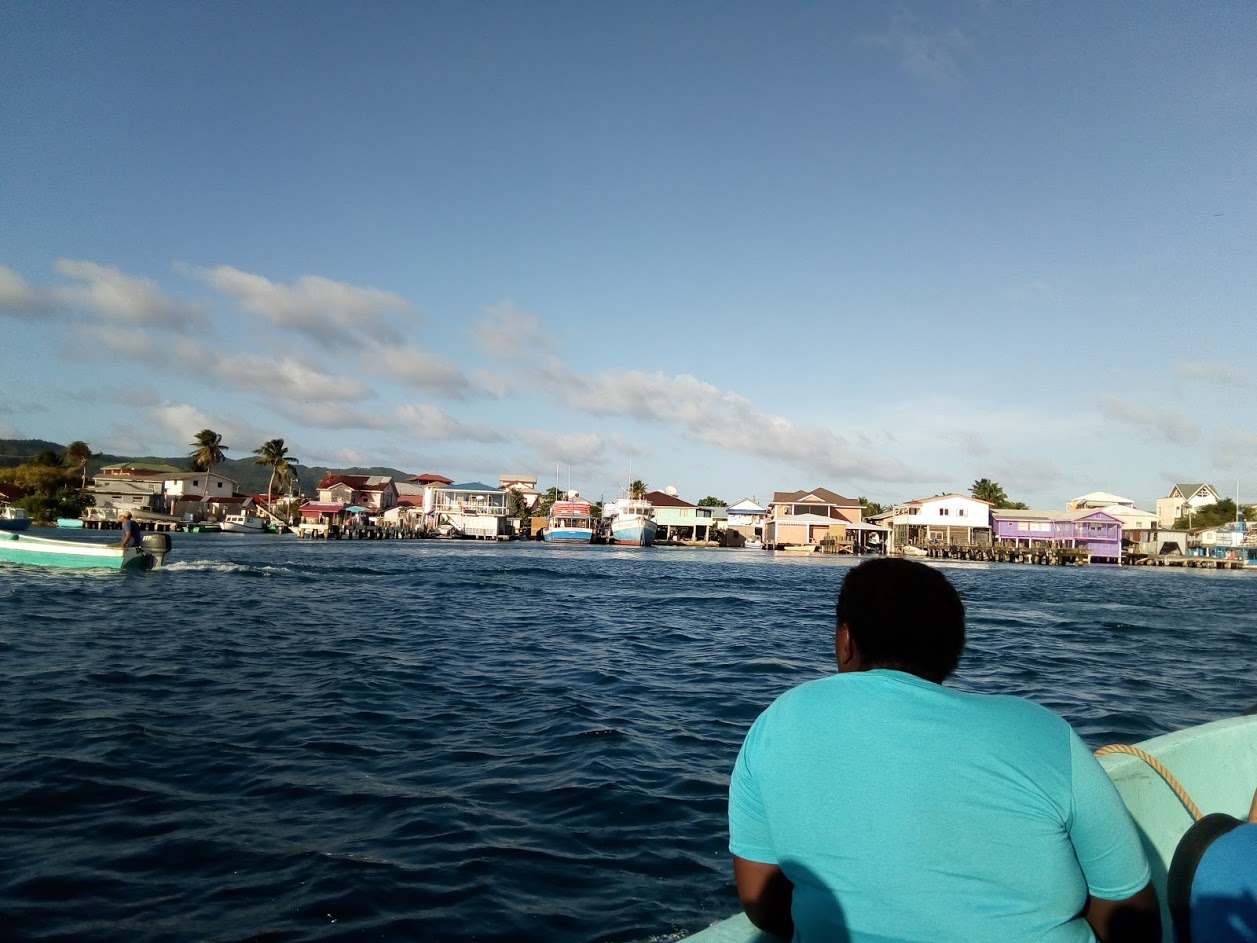Documenting language across modalities: visual and tactile sign language in the Bay Islands

Landing page image for the collection ‘Documenting language across modalities: visual and tactile sign language in the Bay Islands’. Click on image to access collection.
| Language | Bay Islands Sign Language |
| Depositor | Ben Braithwaite |
| Affiliation | University of the West Indies |
| Location | Honduras |
| Collection ID | 0504 |
| Grant ID | SG0459 |
| Funding Body | ELDP |
| Collection Status | Collection online |
| Landing Page Handle | http://hdl.handle.net/2196/d60a6a23-ff46-4c67-b315-4e28edd58725 |
Summary of the collection
This is the first documentation project of Bay Islands Sign Language. The collection primarily consists of recordings of naturalistic conversations with deaf-blind BISL signers. The recordings include the language in the visual-gestural and tactile/proprioceptive-gestural modalities. The corpus is rich with data about family history, history of the language and the community and stories about the signers’ lives including work, love lives, family relations, religion, sickness and problems. Most of the recordings are shot in the town in which the signers in Roatan live but there are recordings of trips to different towns and to the island of Guanaja. Two researchers in the project are deaf-sighted, Ian Dhanoolal and Kimone Elvin and two are hearing-sighted, Kristian Ali and Ben Braithwaite, all based in Trinidad and Tobago.
Group represented
The collection focuses on the BISL signing community. Deafblindness has been present in these communities for at least 100 years. The oldest deaf-blind person we currently know of was born in 1895 and died in 1988 in Jonesville. Deaf-blindness is not limited to close family. In all, there have been at least 11 signers with Usher Syndrome across three generations (not counting one who never learned BISL since he was adopted and taken away to the United States of America as a baby), as well as many more hearing-sighted signers, and deaf-sighted signers without Usher Syndrome. Only four deaf-blind signers are still alive, aged between 51 and 73. Three live in Roatan and one in Guanaja. The boundaries of the signing community extend far beyond the deaf-blind signers. The hearing-sighted members of these tightknit communities signed with the deaf and deaf-blind members to varying degrees of competency, though the language seems to have been largely restricted to the White Islander populations. Many older hearing people from both villages recall signing regularly in the past though some no longer use the language much as a result of deaf-blind friends, neighbours and relatives dying or moving away.
Language information
Bay Islands Sign Language (BISL) is used in the islands of Roatan and Guyana in the Bay Islands, Honduras. It emerged among deaf-blind and hearing-sighted signers in two villages in Roatan at the beginning of the 1900s due to high incidences of deaf-blindness caused by Usher Syndrome. The first deaf-blind signer was born in 1895. Today, there are three deaf-blind signers in Roatan and one deaf-blind signer in Guanaja. There are many hearing-sighted signers as well as one known deaf-sighted signer. There are no young deaf-blind signers. The last deaf-blind signer was born around 1965. Although there are young hearing-sighted signers, the language is unlikely to be used once there are no more deaf-blind signers.
Although there are different signing situations in the Bay Islands, Bay Islands Sign Language refers to this particular language. There has been contact with Lengua de Señas Hondureñas (LESHO) which is the national sign language of Honduras, American Sign Language (ASL) through missionaries an
Collection contents
The collection comprises:
– 43 minutes of lexical elicitation,
– 26 hours of guided and free conversations,
– 58 minutes of an interview in English with a hearing-sighted signer,
– a 500 word lexical database including an ID-gloss and link to an example in the corpus of every sign and in some cases, different meanings, a rough description of the sign, notes and the users of the sign, and
– over 1 hour of annotations in ELAN including English translations and glossing.
The guided and free conversations include:
– 1 hour and 14 minutes of conversation between deaf-sighted signers and researchers,
– approximately 10 hours and 25 minutes of deaf-blind signers and researchers,
– 2 hours and 7 minutes of hearing-sighted and deaf-blind signers and,
– approximately 12 hours and 44 minutes of deaf-blind and deaf-blind signers.
Other information
None of the data in this collection may be used as evidence in court.
Acknowledgement and citation
To refer to any data from the collection, please cite as follows:
Braithwaite, Benjamin. 2020. Documenting language across modalities: visual and tactile sign language in the Bay Islands. Endangered Languages Archive. Handle: http://hdl.handle.net/2196/00-0000-0000-0010-9EE4-4. Accessed on [insert date here].


